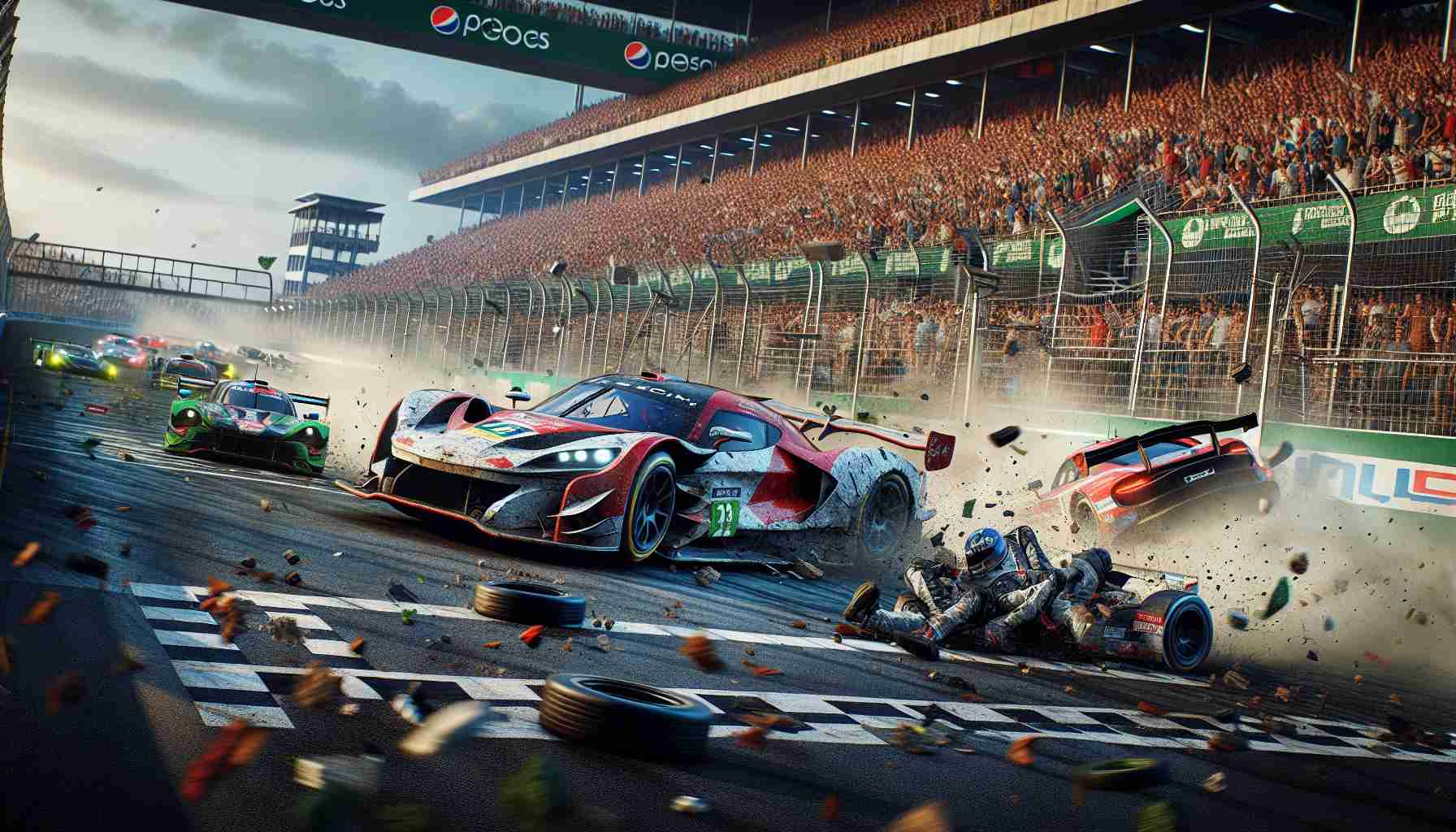- Helio Castroneves debuted at NASCAR’s Speedweek in Daytona, showing remarkable resilience amid challenges.
- Despite starting at the back, he utilized the Open Exemption Provisional to continue competing.
- Castroneves’ experience in the Duel qualifying races was marred by collisions, testing his and his team’s resolve.
- In the ARCA race, he navigated multiple wrecks to achieve an impressive top-five finish.
- Castroneves prepares for the Daytona 500, driven by the determination to triumph in the world of stock car racing.
- The week highlighted perseverance as a crucial factor for overcoming adversity and achieving success.
Helio Castroneves’ debut in NASCAR’s Speedweek at Daytona has been nothing short of turbulent. The seasoned IndyCar champion found himself navigating a sea of misfortune, yet showcased his dogged determination to adapt and conquer.
At the heart of Daytona, the roar of engines underscored a tumultuous week. Castroneves, synonymous with precision on the Indy tracks, faced a formidable initiation into the chaos of stock car racing. Starting with a challenging qualifying round, he found himself at the back of the pack, yet secured a lifeline through the newly minted Open Exemption Provisional.
In the Duel qualifying races, Castroneves gained painful yet critical experience. A collision in the midst of a high-speed ballet left his car wounded but still fighting, a testament to the grit behind the wheel. His team, mirroring his resolve, worked through the night, piecing back a machine battered by the harsh Daytona stage.
The ARCA race unfolded like a melodramatic play, with Castroneves embroiled in a series of spectacular wrecks. Despite an evening riddled with bruises and battered metal, he crafted a masterful escape from chaos to clinch a top-five finish, a small triumph wrapped in absurdity as one final crash greeted him even after the checkered flag.
Emerging from a week of mechanical mayhem and shattered dreams, Castroneves stands ready for the ultimate test—the Daytona 500. In this legendary race, he aims to carve his name alongside the icons of motorsport history. The key takeaway: Perseverance in the face of adversity often leads to the most unexpected victories, even amidst the debris.
Helio Castroneves’ NASCAR Debut: What We Can Learn About Perseverance in Motorsports
Helio Castroneves’ NASCAR Transition: How to Adapt in a New Racing Arena
Helio Castroneves’ tumultuous debut in NASCAR Speedweek at Daytona reveals much about the art of adaptation and perseverance in motorsports. Known for his precision and success in IndyCar racing, Castroneves faced a fierce challenge entering the world of stock car racing—a testament to the dynamic nature of professional driving. Here, we’ll explore how to navigate such transitions, real-world applications, and insights into motor racing.
How-To: Transitioning from IndyCar to NASCAR
1. Learn from the Masters
– Study techniques from seasoned NASCAR drivers. Understanding the nuances of drafting, pit strategies, and the physics unique to stock cars is crucial. Mentorship and coaching can accelerate this learning curve.
2. Hands-On Practice
– Practice consistently on various tracks. Simulation tools and race scenarios can help one acclimate to the different vehicle dynamics encountered in NASCAR.
3. Team Coordination
– Establish clear communication with the new pit crew and team engineers. Success often relies on seamless teamwork, particularly in NASCAR, where pit stops and strategy play a vital role.
Real-World Use Cases
– Crossover Athletes: Castroneves exemplifies how athletes transitioning between sports need to adapt their skills to fit new environments, a concept applicable to other domains such as business or team sports.
– Resilience Training: The ability to handle setbacks, as demonstrated by Castroneves, is a valuable trait for anyone facing significant changes or challenges in their career.
Market Forecasts and Industry Trends
The automotive racing industry is poised for growth with trends such as increased global viewership, expansion of electric vehicle racing (e.g., Formula E), and enhanced fan engagement through virtual reality experiences. According to market reports, the motorsports market is expected to witness significant expansion, driven by technological advancements and increased investment in sports promotions.
Pros & Cons Overview
Pros:
– Adaptability: Building skill sets that are versatile enough to apply in various racing formats.
– Exposure: Diversifying into different racing sectors increases visibility and marketability.
Cons:
– Learning Curve: Transitioning into a different racing category involves a steep and often challenging learning period.
– Increased Pressure: The expectations and risks are heightened, especially in high-stakes races like the Daytona 500.
Controversies & Limitations
– Safety Concerns: Switching to NASCAR involves adapting to its unique safety regulations and vehicle designs, which differ from IndyCar standards.
– Cultural Adjustments: The racing culture and fan base can differ significantly between IndyCar and NASCAR, requiring drivers to adapt their public personas and engagement strategies.
Actionable Recommendations
– Embrace Change: Accept that any transition involves a learning phase, during which persistence and patience are critical.
– Seek Feedback: Regularly engage with coaches, teammates, and experienced racers to refine your approach and strategies.
– Focus on Strengths: Recognize and leverage transferable skills from previous experiences to gain an edge in new environments.
For more insights into the exciting world of racing, visit NASCAR and learn more about upcoming events and developments in motorsports.
By understanding Helio Castroneves’ journey and applying these strategies, aspiring racers and enthusiasts can navigate their unique paths in the dynamic world of motorsports.
